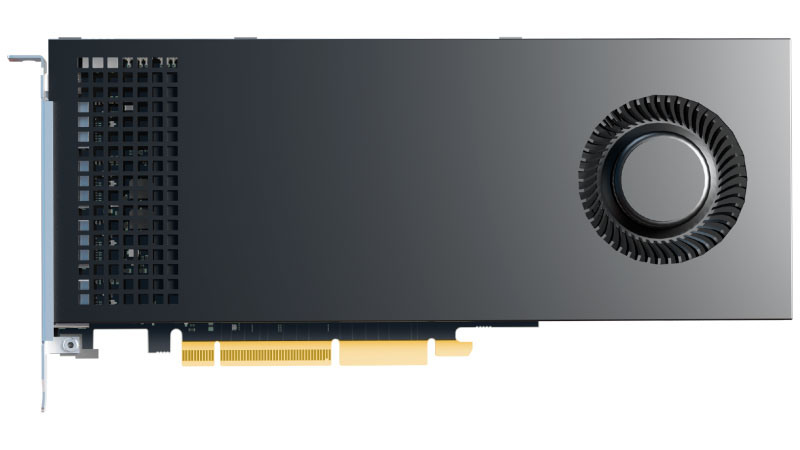Matrox Launches Single-Slot Intel Arc GPUs
Intel certainly has a way with old-school brands. First, it was Sparkle, and now Matrox has jumped on Intel's Arc Alchemist bandwagon. The latter has announced the brand's new Luma series of graphics cards, leveraging Intel's Arc A310 and Arc A380, one of the best graphics cards on the market.
The Arc A3 series utilizes the ACM-G11 silicon. The difference between the Arc A310 and Arc A380 comes down to the former having two fewer Xe cores and 2GB less GDDR6 memory on a limited 64-bit memory interface. As a result, both graphics cards hit the market without much fanfare. For instance, the Arc A380 was only initially available in China, and Intel subsequently launched the Arc A310 in the most silent way the chipmaker could. Matrox is one of the few, if not the first vendor, to release an Arc A310, and not just one but two of them.
The Luma A310 and Luma A310F are low-profile graphics cards that will easily fit into any small-form-factor (SFF) system. Matrox includes low-profile brackets with these two specific SKUs. The graphics cards stick to a single-slot design with a width of 16.76cm (6.6 inches). In addition, the Luma A310 uses a passive cooler, whereas the Luma A310F relies on a blower-type design with a small cooling fan. The Luma A380 also conforms to a single-slot design. However, it's a full-size graphics card with a length of 25.38cm (9.99 inches), so it's not the best option for SFF systems.
Matrox Luma Specifications
| Header Cell - Column 0 | Luma A310 | Luma A310F | Luma A380 |
|---|---|---|---|
| GPU | Intel Arc A310 | Intel Arc A310 | Intel Arc A380 |
| Memory | 4GB GDDR6 | 4GB GDDR6 | 6GB GDDR6 |
| Interface | PCIe 4.0 x16 (x8 electrical) | PCIe 4.0 x16 (x8 electrical) | PCIe 4.0 x16 (x8 electrical) |
| Cooling | Passive | Active | Active |
| Power Consumption | 30W | 50W | 75W |
| Video Outputs | 4 x Mini DisplayPort | 4 x Mini DisplayPort | 4 x DisplayPort |
| Form Factor | Low Profile, Single Slot | Low Profile, Single Slot | Full Height, Single Slot |
| Dimension | 16.76 x 6.86cm | 16.76 x 6.86cm | 25.38 x 12.68cm |
All three Luma graphics cards leverage the PCIe 4.0 x16 interface. However, it's important to underline that they're limited to x8 operating electrically, thus only taking advantage of half the bandwidth of the expansion slot.
The Arc A310 and Arc A380 have the same 75W TDP. In Matrox's case, the Luma A310 and Luma A310F are 30W and 50W TDP graphics cards, respectively. On the other hand, the Arc A380 adheres to Intel's 75W reference specifications. In any event, the graphics cards draw all their power from the expansion slot, so no external PCIe power connectors are needed.



Although you can use Matrox's Luma graphics card for gaming, the products aim for industrial, digital signage, and medical clients. The Luma A310 and Luma A310F sport four Mini DisplayPort 2.1 (secure) outputs, while the Luma A380 has four standard DisplayPort outputs. The combination allows them to accommodate up to four displays simultaneously. Matrox sells a separate Mini DisplayPort to a standard DisplayPort (CAB-MDP-DPF) cable for $29.99 if users prefer the latter.
Customers can opt for two 8K displays at 60 Hz or 5K at 120 Hz in a dual-display setup. However, in a quad-display configuration, the resolutions are restricted to 5K at 60 Hz with HDR 12b support. In addition, the manufacturer includes the Matrox PowerDesk and Matrox MuraControl for managing multi-display setups.
Get Tom's Hardware's best news and in-depth reviews, straight to your inbox.
Matrox backs Luma products with a three-year warranty, but buyers can extend it for an added cost. The graphics cards have a life cycle of seven years.

Zhiye Liu is a news editor, memory reviewer, and SSD tester at Tom’s Hardware. Although he loves everything that’s hardware, he has a soft spot for CPUs, GPUs, and RAM.